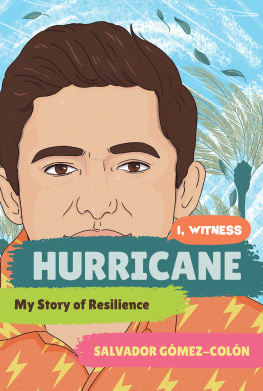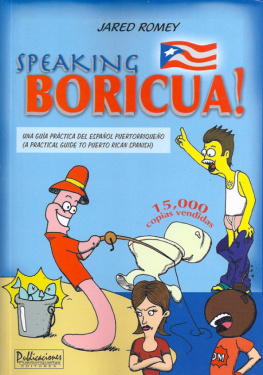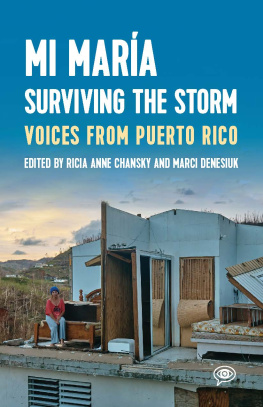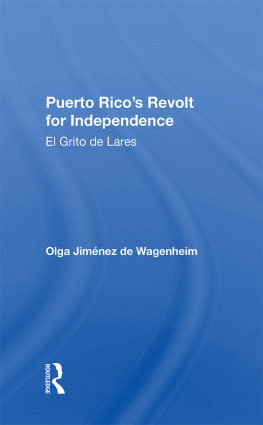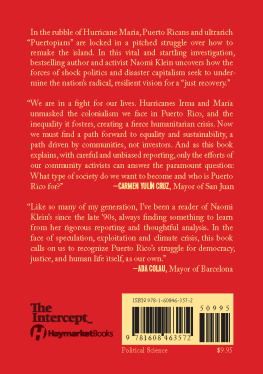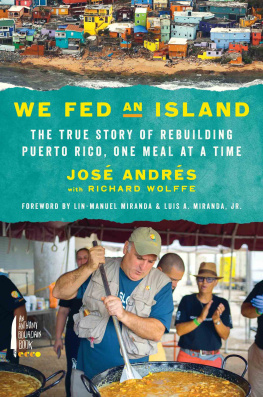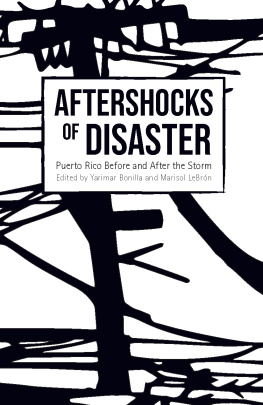Contents
Landmarks
Page-list


I, WITNESS
HURRICANE
My Story of Resilience
SALVADOR GMEZ-COLN

To all the young people who want to build a better future and those who have already begun.
Series edited by Dave Eggers, Zainab Nasrati, Zo Ruiz, and Amanda Uhle.
Copyright 2021 by The Hawkins Project and Salvador Gmez-Coln
All rights reserved
First Edition
For information about permission to reproduce selections from this book, write to
Permissions, W. W. Norton & Company, Inc., 500 Fifth Avenue, New York, NY 10110
For information about special discounts for bulk purchases, please contact
W. W. Norton Special Sales at specialsales@wwnorton.com or 800-233-4830
Jacket design: HANA ANOUK NAKAMURA
Jacket art: ADRIANA BELLET
Book design by Hana Anouk Nakamura
Production manager: Beth Steidle
Library of Congress Cataloging-in-Publication Data is available
ISBN 978-1-324-01665-6
ISBN 978-1-324-01666-3 (ebk.)
W. W. Norton & Company, Inc., 500 Fifth Avenue, New York, N.Y. 10110
www.wwnorton.com
W. W. Norton & Company Ltd., 15 Carlisle Street, London W1D 3BS
CONTENTS
Dave Eggers, Zainab Nasrati, and Zo Ruiz
One of the best ways to understand complicated issues is through the story of a person who lived at the center of it. If you want to learn about what would drive teenagers to fight for young womens rights to education in Burundi, why not read the story of someone directly involved? This is what this series is all about: letting young peoplewho have seen and lived through recent historytell their stories.
Its important to understand other peoples struggles, especially people who live in different places or come from different backgrounds than you do. Our hope with this book series is that by hearing one persons story, our readers will learn about many peoples struggles and think about what we can do together to help make the world better.
Teenagers like Malala Yousafzai and Greta Thunberg became iconic for standing up for what they believe is right. Other teens, not yet as well known, have also stepped up to make a difference. When Adama Bah was a teenager, she was falsely accused of criminal activity because she is Muslim. When Gilda Temaj was only sixteen, she had to leave her home in Guatemala and make her way alone to the United States. Now that shes a college student, Gilda is studying to become a lawyer so she can help others who seek safe haven in the United States.
The I, Witness books will bring you stories of ordinary kids and teens like you who have faced extraordinary challenges in their lives. Their stories are exciting and surprising. At times they are sad, and at others they are joyful. We hope that you will consider your own life and your own story as you read. Is your life very similar to the authors? Or very different? Is there a problem in the world or in your life that you would like to help solve?
In this book, youll meet Salvador Gmez-Coln, who lived through Hurricane Maria in Puerto Rico in 2017. After the storm left the island devastated, he jumped into action, helping hundreds of his fellow islanders with basic needs. We admire Salvadors drive to help others, and think that all of us can learn from what he faced and what he achieved. Some of us will never endure a hurricane, but all of us will do well to remember the determination Salvador showed in finding help for his neighbors, even when others doubted him. As readers ourselves we were heartened and inspired by Salvadors story, and we hope you will be, too.
HURRICANE

Eighteen days before Hurricane Maria, I turned fifteen years old. The morning of my birthday, I woke up to blue balloons all over the apartment and a happy birthday sign on the dining table. Every year, my mom decorated the apartment, and I looked forward to it more than any other present. It may seem like a small thing, but her decorations meant a lot to me. After school, I celebrated my birthday by having a late lunch with my best friends at a Chinese restaurant. That weekend, I went to my grandparents beach apartment with my dad on the east coast of Puerto Rico. My family has owned that apartment since before I was born, and as a child I had spent countless summers there with my cousins in what we call our Family Camp. I reflected on both those years and turning fifteen years old. It all felt so monumental.
At the time, I lived in Condado, a neighborhood in the capital city of San Juan. I went to school, where I enjoyed photography, had swim practice every day, and attended Model United Nations competitions on Fridays and Saturdays. My parents had separated when I was five years old, so I split time between my moms house and my dads. A few years after the divorce, I went from being an only child to having two stepsisters once my mom remarried. I loved spending time with my two stepsisters, and we got along well. I was content and lived a normal life. But after Hurricane Maria, I was forced out of normalcy. We all were.
Hurricane Maria was unlike any other storm I had seen or felt in my past. There had never been anything as destructive, so there was nothing to compare it to. In Puerto Rico, hurricanes are part of every summer, so I have lived through quite a few. There is a hurricane almost every year, and they are usually Category 2 or Category 3 storms.
The first thing to know about hurricanes is that they are all destructive and that all the categories are powerful. Hurricanes have already passed two thresholds: tropical depression and tropical storm. Categories 1 to 3 hurricanes are manageable, though they always cause flooding, damage to buildings, and injuries. A Category 4 hurricane is a beast within itself, but there is no cap to a Category 5 hurricane. A Category 5 takes everything and devours it. It is a storm without mercy. Hurricane Maria fluctuated between a Category 4 and Category 5. When it hit Puerto Rico, it was a Category 4 storm.
Prior to Hurricane Maria, the strongest storm that I had lived through was Hurricane Irene, and it was a Category 3 storm. I remember the chaos it had caused on the island. The powerful winds and heavy rainfall caused people to lose electricity and water. I was in second grade and everyone at school was talking about it. One of my sisters third-grade teachers was named Irene, and after the hurricane my sisters classmates were mean to the teacher.
Politicians and the media announced Hurricane Maria was coming and said it was going to hit us hard, but they made the announcement on a Sunday, only two days before the hurricane. They had given us more warning with Hurricane Irma, a hurricane that had come two weeks earlier. Maria caught us in the dark.
On Monday I went to school, but after first period the principal sent out an email announcing that students were required to leave school and return to their homes at noon. That night, after my half day at school, I felt so anxious about the hurricane that I did not sleep.
On Tuesday, September 19, my mom, grandpa, grandma, and I prepared for the hurricane. My stepdad would have been with us, but he was in New York, and my stepsisters were with their mom. My dad stayed with my paternal grandparents to watch over them. We packed bags in case we had to leave our apartment or the building. Because we lived three blocks from the beach, we were warned there could be tsunami-like flooding, and that we might have to evacuate the building, which was the worst-case scenario.

